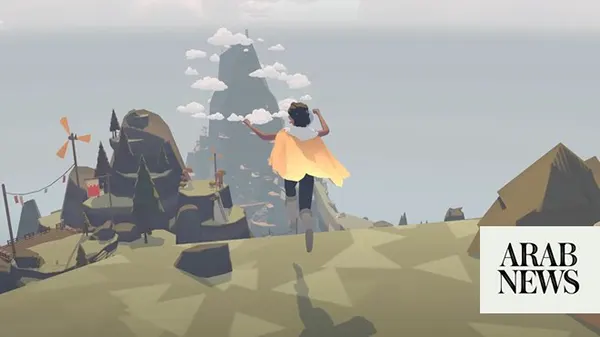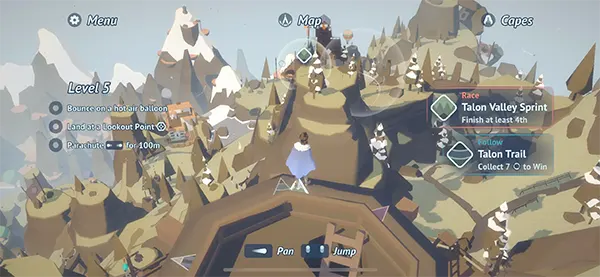Laya’s Horizon: Relaxation, Flight and the Future of Game Design

Laya’s Horizon, a meditative open-world game from Snowman (creators of Alto’s Odyssey), invites players to glide above stunning, expansive landscapes with a design focused on serenity and physics-based immersion. Released in 2024, the game has garnered positive reception for its unique blend of minimalism, interactivity, and tranquil exploration. While Laya’s Horizon is gaining attention worldwide, it remains underrepresented in the Ukrainian-language gaming community—making a thorough English-language analysis especially timely.
Flight Mechanics Reimagined: The Core Gameplay of Laya’s Horizon
Unlike most mobile games that rely on tap-based controls, Laya’s Horizon introduces a fully gesture-driven flight system. Players tilt and angle their characters’ arms to control the direction and speed of gliding, drawing direct inspiration from real-world wing-suit physics. This fluid control offers a tactile, immersive experience rarely seen in mobile titles.
The topography of the game world plays an essential role in player movement. Wind currents, air resistance, and terrain elevation are not just visual details but actively affect how players move across the map. The need to master these elements adds depth to what might otherwise appear as a casual, relaxing game.
Each session offers players challenges that test their navigation skills while still maintaining a low-pressure atmosphere. Whether racing through canyons or brushing past treetops, the dynamic flight physics invite both skill and calm concentration.
Design Philosophy: Blending Realism and Calm
The developers at Snowman focused on creating a gameplay loop that encourages peaceful exploration rather than competitive progress. Laya’s Horizon does not feature timers, leaderboards, or scores—instead, success is measured in personal milestones and joyful movement.
Visuals support this design: the muted colour palette, stylised environments, and slow transitions foster a meditative atmosphere. This visual serenity is crucial to avoiding fatigue in long sessions and reflects the overall intention to support mindful gameplay.
In sound design, the minimalist soundtrack shifts dynamically with altitude and environment, replacing traditional musical cues with ambient layers. This audio choice furthers the feeling of floating through nature rather than actively completing tasks, making the experience both introspective and grounding.
The Open World of Laya’s Horizon: Exploration Over Objectives
The world of Laya’s Horizon is not divided into levels or stages. Instead, it presents a continuous, hand-crafted environment full of hills, forests, caves, and valleys. There are over 50 unique characters to encounter, along with side-quests that enhance narrative richness without interrupting the flow of exploration.
This landscape isn’t just decorative. Certain zones are rich in verticality, while others provide ideal conditions for gliding practice or narrative development. The terrain itself becomes a puzzle to decode, and each player’s journey is organically shaped by the paths they choose.
Rather than funnel players toward specific goals, the game subtly encourages them to wander and discover. This sense of non-linear progression makes it ideal for short, mindful sessions as well as extended play—something uncommon in mobile game design.
Accessibility and Device Integration
Despite the complexity of its physics, Laya’s Horizon is optimised for a wide range of devices. Touch responsiveness is high, and controls remain consistent even on lower-end smartphones. This is essential for maintaining the accessibility and comfort that the game’s philosophy promotes.
The game also offers haptic feedback for supported devices, allowing players to “feel” wind shifts or sudden altitude drops. This integration bridges the gap between screen and sensation, increasing immersion without requiring external hardware.
Additionally, the game syncs progress across multiple devices through account linking, ensuring continuity without sacrificing data security or performance. This attention to user convenience reflects a deeper understanding of modern mobile gaming habits.

Why Laya’s Horizon Stands Out in 2024
In a year filled with visually intense, microtransaction-driven titles, Laya’s Horizon takes a radically different route. It delivers a full experience without in-app purchases or ads, proving that commercial success can coexist with ethical design choices.
Critical response has been strong. Reviewers from TouchArcade and PocketGamer highlight the game’s polish, visual fidelity, and innovative mechanics. Player reviews emphasise its relaxing impact, calling it a “mental health staple” during high-stress days.
Though initial awareness was low, word-of-mouth and steady organic growth have led to a dedicated community of players. Snowman has announced intentions to support the title with updates, new storylines, and additional locations throughout 2025.
Ideal for a Niche but Growing Audience
Laya’s Horizon is particularly relevant for players seeking alternatives to fast-paced or competitive mobile games. It appeals to those who use games as a form of mindfulness or creative expression, not just entertainment.
Its educational potential also stands out. The physics engine provides intuitive insights into aerodynamics, and the game could easily be incorporated into educational contexts about environmental design or sensory integration.
Ultimately, Laya’s Horizon carves out a unique place in modern game design: one where mechanics serve experience, not the other way around. It sets a high standard for future titles aiming to be both technologically innovative and emotionally meaningful.



